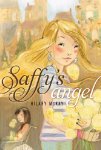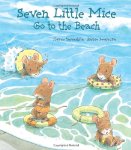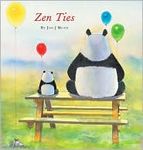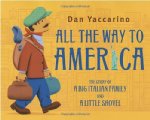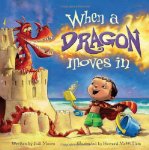In a week it will be the first day of summer, and I'd like to kick off the season with a deliciously funny book about a boy and how he spends his summer vacation. The book perfectly captures the flavor of summer, and it shows readers that you don't have to venture far to have adventures.
You can find more summery books on the
TTLG Summer Days feature page.
Summer in the city
David Hormel and Marie-Louise Gay
Illustrated by Marie-Louise Gay
Fiction

For ages 7 and up
Groundwood Books, 2012, 978-1-55498-177-9
School will soon closing for the summer, and something very “fishy” is going on. Usually, by now, the sitting room in Charlie’s house is littered with travel books, guides, and maps. Every summer, Charlie, his little brother Max, and their parents have gone on trips to out-of-the-way places where they have had the most extraordinary adventures. Charlie’s parents aren’t interested in going to the Bahamas, Disneyland, or London. No, they like to go to places that are hard to get to, places where one never knows what is going to happen next.
Then one evening Charlie’s parents finally explain why there is a singular lack of vacation planning. Apparently, money is a little tight, so they have decided that the family is going to stay in Montreal for the summer and have a “stay-cation” instead of a vacation. Charlie cannot imagine how staying at home is going to be any fun. Nothing ever happens in his neighborhood.
Since he has control over his life this summer - for a change – Charlie decides that he is going to get a summer job, or “go camping in the wilderness and see wild animals.” Perhaps he will get the opportunity to “save someone’s life.” The problem is that he does not know how to make any of these grand ideas come about. Then, when he is at the laundromat, he gets a job idea. Charlie notices that there are a lot of lost cat posters pinned to the walls, and he decides that he will try to find the missing cats and claim the rewards that many of the worried pet owners are offering.
In theory, this job sounds like a fantastic idea, but Charlie and Max soon find out that matching lost cats up with their owners is a tricky business. Charlie does however manage to get Romeo, Madame Valentino’s cat, out of a tree. He saves a life. Kind of.
After this exhausting job, Charlie is cajoled into camping with Max in the back yard. After tussling with the tent for some time, it is finally erected (sort of), and Max and Charlie are ready for their camping adventure. They tell scary stories for a while, and then they play flashlight tag. After Max falls asleep, Charlie hears some animal making noises outside. He peeks through the tent flap and sees a skunk. Then he sees the family cat, Miro, pouncing on the skunk. Then, of course, he sees (and smells) Miro getting sprayed by the skunk. After a washing Miro thoroughly, Charlie and his family once again settle down for the night, but Charlie’s nocturne adventures are not over yet.
In this delightfully funny and at the same time thoughtful book, Marie-Louise Gay and David Homel continue the adventures of Charlie, Max, and their parents. At first it seems as if the family stay-cation is going to be rather humdrum, but it is not long before Charlie finds out that one does not have to venture away from home to make discoveries, find new friends, and to have new (and often exciting) experiences.






